
1
Navigating News Online:
Where People Go, How They Get There and What Lures Them Away
By Kenny Olmstead, Amy Mitchell and Tom Rosenstiel
Whatever the future of journalism much of it depends on understanding the ways that people navigate
the digital news environment—the behavior of what might be called the new news consumer.
Despite the unprecedented level of data about what news people consume online and how they
consume it, understanding these new metrics has often proven elusive. The statistics are complicated,
sometimes contradictory, and often introduce new information whose meaning is not clear.
To shed more light on Web news behavior, the Pew Research Center’s Project for Excellence in
Journalism has conducted an in-depth study of detailed audience statistics from the Nielsen Company.
The study examines the top 25 news Websites in popularity in the United States, delving deeply into
four main areas of audience behavior: how users get to the top news sites; how long they stay during
each visit; how deep they go into a site; and where they go when they leave.
Overall, the findings suggest that there is not one group of news consumers online but several, each of
which behaves differently. These differences call for news organizations to develop separate strategies
to serve and make money from each audience.
The findings also reveal that while search aggregators remain the most popular way users find news, the
universe of referring sites is diverse. Social media is rapidly becoming a competing driver of traffic. And
far from obsolete, home pages are usually the most popular page for most of the top news sites.
What users do with news content, the study also suggests, could significantly influence the economics of
the news industry. Understanding not only what content users will want to consume but also what
content they are likely to pass along may be a key to how stories are put together and even what stories
get covered in the first place.
Among the findings:
• Even the top brand news sites depend greatly on “casual users,” people who visit just a few
times per month and spend only a few minutes at a site over that time span. USAToday.com
was typical of most of these popular news sites: 85% of its users visited USAToday.com between
one and three times per month. Three quarters came only once or twice. Time spent was even
more daunting: When all the visits were added together, fully a third of users, 34%, spent

2
between one and five minutes on the paper’s Website each month.
1
Even if, as some suggest,
online data tend to count some users multiple times, inflating the number of casual users and
undercounting repeat visits, casual users till would be the largest single group.
• There is, however, a smaller core of loyal and frequent visitors to news sites, who might be
called “power users.” These people return more than 10 times per month to a given site and
spend more than an hour there over that time. Among the top 25 sites, power users visiting at
least 10 times make up an average of just 7% of total users, but that number ranged markedly,
from as high as 18% (at CNN.com) to as low as 1% (at BingNews.com).
• Even among the top nationally recognized news site brands, Google remains the primary entry
point. The search engine accounts on average for 30% of the traffic to these sites.
• Social media, however, and Facebook in particular, are emerging as a powerful news referring
source. At five of the top sites, Facebook is the second or third most important driver of traffic.
Twitter, on the other hand, barely registers as a referring source. In the same vein, when users
leave a site, “share” tools that appear alongside most news stories rank among the most clicked-
on links.
• When it comes to the age, news consumers to the top news websites are on par with Internet
users overall. This stands apart from news consumption on traditional platforms, which tends to
skew older, and may bode well for the industry.
All of this suggests that news organizations might need a layered and complex strategy for serving
audiences and also for monetizing them. They may need, for instance, to develop one way to serve
casual users and another way for power users. They may decide it makes sense to try to convert some of
those in the middle to visit more often. Or they may try to make some of their loyal audience stay longer
by creating special content. Advertising may help monetize some groups, while subscriptions will work
for others. And the strategy that works best for each site may differ.
What’s more, with the development of mobile, these layers will almost certainly multiply.
The study builds off of
our 2010 NetView analysis of the top roughly 200 news sites in the United States,
those that, by Nielsen’s count, averaged at least 500,000 unique U.S. visitors per month. In the new
report, PEJ narrowed the focus to the top 25 sites. Despite the rapid growth of eReader and tablet
devices, most online news consumption still occurs on browser. Only between 7-10% of the population
currently owns a tablet or e-reader. The study, which examined nine months of consumer data spanning
the first three quarters of 2010, sheds light on the significance of search aggregators and social
1
Some experts believe that traditional online metrics undercount Website loyalty because “unique visitors”
actually count computers, not people. So if the same user visits a site from a different computer, he or she would
be counted more than once. Still, these numbers suggest that a good deal of online news consumption involves
people arriving casually, often through referrals from search engines or social media. This is discussed more in the
section on How Users interact with News.
3
networks, the importance of creating a family of related Websites, and hints at which kinds of sites
might have more success with paywalls than others.
The Top 25
Which news providers make it in among the top 25 for total U.S. traffic? While the raw figures for
visitors vary from one metrics firm to the next (Nielsen’s unique visitors numbers are often much
smaller than those of the ratings agency comScore, for example, and both rely mainly on home-based
traffic rather than work-based, which may undercount total news consumption) the list and rank of top
sites remains relatively consistent across measuring companies.
In that mix, based on Nielsen’s data, legacy news organizations (those attached to a news operation that
is in another platform such as television or print) account for about two-thirds of the top 25 sites (17 in
all). Online-only ventures, split between pure aggregators and those that produce some original content
and engage also in aggregation, account for the remaining third (eight sites in all). Specifically:
• Eleven are newspaper websites: The New York Times (nyt.com), Washington Post
(washingtonpost.com), USA Today (usatoday.com), Wall Street Journal (wsj.com), LA Times
(latimes.com), New York Daily News (nydailynews.com), New York Post (nypost.com), Boston
Globe (Boston.com), San Francisco Chronicle (sfgate.co), The Chicago Tribune
(ChicagoTribune.com) and the British Daily Mail (mail.co.uk).
• Six are broadcast network television or cable news sites: MSNBC (msnbc.com), CNN (cnn.com),
ABC News (abcnews.go.com), Fox News (foxnews.com), CBS News (cbsnews.com) and BBC News
(bbc.co.uk).
• One is a wire service news site: Reuters (reuters.com).
• Three are hybrid online-only sites, which do a mix of aggregation and original reporting: Yahoo
News (news.yahoo.com), AOL News (news.aol.com) and Huffington Post (huffingtonpost.com).
• Four are pure news aggregators: Google News (news.google.com), The Examiner
(examiner.com), Topix (topix.com) and Bing News (news.bing.com).
The list from another main Web traffic firm, Hitwise, is nearly identical – it contains nearly the same mix
of properties. The same is true, though it sometimes groups families of sites differently, of comScore’s
list.
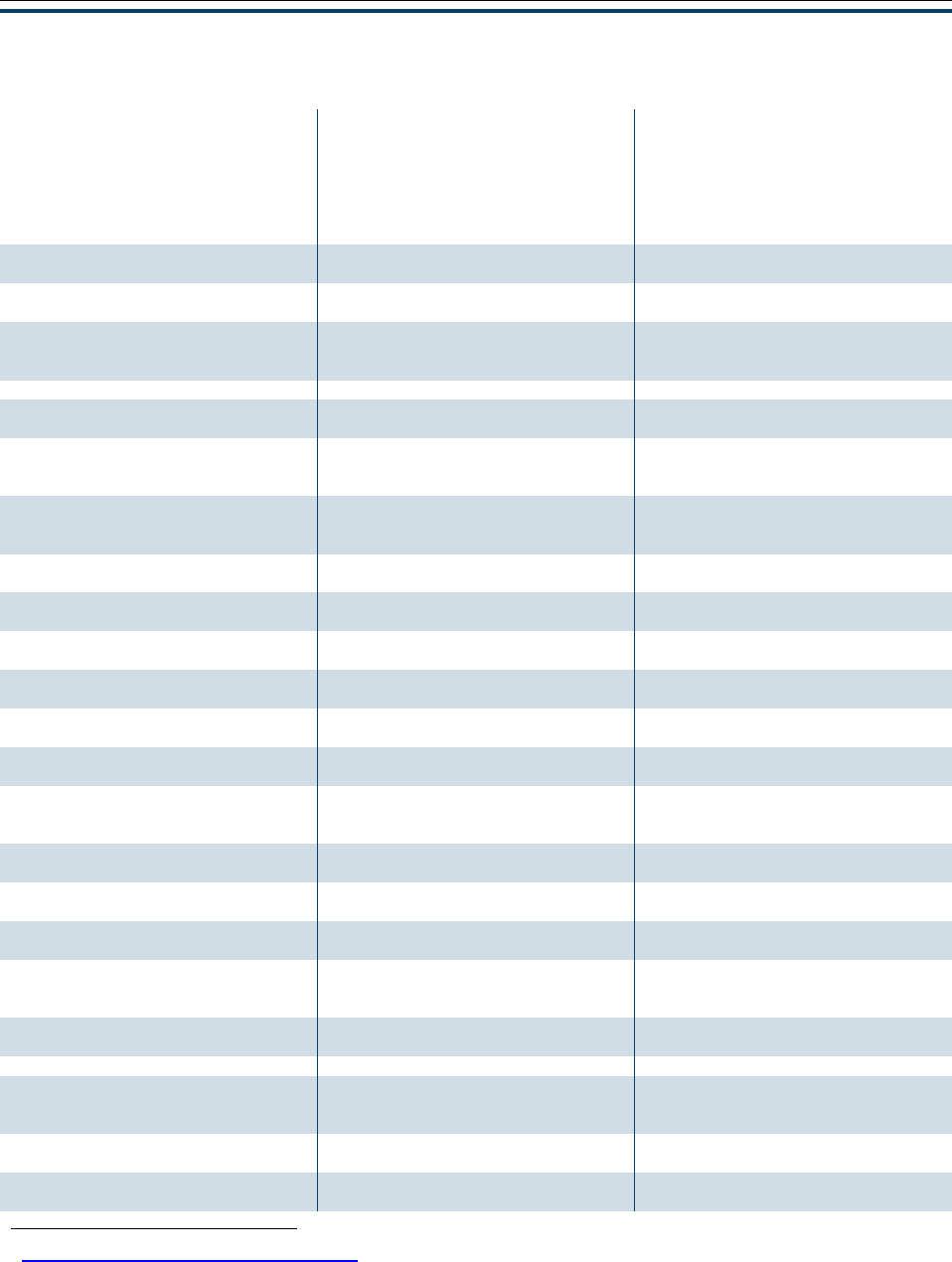
4
Most Popular News Websites as Measured by, Three Research Firms
Average Monthly Audience in 2010
Top News Sites, Nielsen
Tope News Sites, comScore
Top News Sites, Hitwise
Rank
Domain
Unique
Visitors
Rank
Domain
Unique
Visitors
Rank
Domain
Share
of
Month
ly
Web
Traffic
2
1
Yahoo! News
Websites
40459 1
Yahoo! News
Network
94,509 1 news.yahoo.com 8.53%
2
CNN Digital
Network
35658 2 CNN Network 67,845 2
www.msnbc.msn
.com
3.50
3
MSNBC
Digital
Network
31951 3
MSNBC Digital
Network
48,721 3 www.cnn.com 2.64
4
AOL News
20821
4
AOL News
35,017
4
news.google.com
2.04
5
NYTimes.co
m
15948 5
The New York
Times Brand
32,386 5
www.foxnews.co
m
1.72
6
Fox News
Digital
Network
15502 6
Tribune
Newspapers
24,666 6
www.nytimes.co
m
1.41
7
ABCNEWS
Digital
Network
13251 7
Huffington
Post
24,542 7 news.aol.com 1.29
8
TheHuffingto
nPost.com
11510 8
ABC News
Digital
19,343 8
www.drudgerepo
rt.com
1.19
9 Google News 11382 9
USATODAY
Sites
17,336 9
www.huffingtonp
ost.com
0.99
10
washingtonp
ost.com
10095 10
Washingtonpo
st.com
16,353 10
www.usatoday.c
om
0.95
11
CBS News
Network
9947 11
Advance
Internet
16,000 11 local.yahoo.com 0.90
12
USATODAY.c
om
9147 12 CBS News 15,332 12 www.topix.com 0.74
13 LA Times 8314 13
Wall Street
Journal Online
13,673 13
today.msnbc.ms
n.com
0.60
14
Daily News
Online
Edition
7247 14 Mail Online 13,596 14
www.washington
post.com
0.59
15 BBC 6519 15
McClatchy
Corporation
13,447 15
www.associatedc
ontent.com
0.53
16
Examiner.co
m
6242 16
Hearst
Newspapers
13,241 16 abcnews.go.com 0.53
17 Bing News 4855 17
Examiner.com
Sites
12,693 17
www.dailyfinanc
e.com
0.47
18
The Slate
Group
Websites
4526 18
MediaNews
Group
12,086 18
www.bing.com/n
ews
0.44
19 Topix 4409 19
NY Daily
News.com
11,719 19
www.bbc.co.uk/n
ews
0.44
20
Boston.com
4336
20
BBC News
10,267
20
www.wsj.com
0.41
21
New York
Post
Holdings
4314 21 Fox News.com 10,186 21
www.nydailynew
s.com
0.39
22 Telegraph 4044 22 Gaurdian.co.uk 8,526 22
www.cbsnews.co
m
0.39
23
Guardian.co.
uk
3885 23 Topix.com 7,219 23
www.foxnews.co
m/politics
0.36
2
See PEJ’s annual State of the News Media report for an in-depth look at all three measurement companies
methodologies.

5
24
NPR
3835
24
Belo
6,996
24
www.buzzle.com
0.34
25
Chicago
Tribune
3785 25 Boston.com 6,868 25
www.examiner.c
om
0.34
Source: Nielsen Company, comScore, Hitwise
Note: MSNBC.com and MSNBC are different entities. The two companies have a separate board and editorial staff. MSNBC is
owned by NBC Universal (Comcast is now the majority shareholder in NBC Universal) and based in New York City, while
MSNBC.com is a joint venture between Microsoft and NBC Universal and is based in Redmond, Washington. MSNBC.msn.com is the
home page for MSNBC.com.
PEW RESEARCH CENTER’S PROJECT FOR EXCELLENCE IN JOURNALISM
As a group, the top 25 general interest news sites differ markedly from the way people interact with one
of the biggest specialized news sites on the Web, ESPN.com. In total numbers, the audience of
ESPN.com, the sports news Website, comes in just behind that of YahooNews.com and MSNBC.com and
ahead of all the Websites of legacy news organizations. In audience behavior, however, the site is
strikingly different. Fully 20% of ESPN.com’s audience returns more than 10 times per month. And more
than a quarter of visitors (26%) spend more than an hour on the site over the course of the month. That
is nearly three times higher than the average percentage of power visitors at the top 25 general interest
news sites (7%).
General interest news sites are actually closer in behavior to the shopping site Amazon.com. Amazon
consistently ranks among the top five Web destinations overall—49.5 million unique visitors per month
according to Nielsen. The site, which sells everything from diapers to digital books to furniture, is
designed for quick transactions but also wants shoppers to return often. Its audience, compared to the
top news sites, tends to return a little more often but stay a shorter period of time. Only 7.5% of its
users visit more than 10 times per month, nearly equal that of the average across the top 25 news sites
(7%). By contrast, nearly two-thirds of its audience (65.4%) visits just once or twice a month, versus 77%
on average for the top news sites. In total minutes, about a quarter (24.4%) clock one to five minutes
per month while 15% spend more than an hour, double the average for top news sites.
These numbers suggest that the ESPN digital network, whether driven by the topic matter, technical
design, content quality or a combination, has found a formula for attracting and retaining an audience
that most general news sites have not. General news by its nature may not elicit the same kind of
passion as a single topic might, particularly sports, which are built around drama and have finality each
day with game results. But there may well still be insights to glean from ESPN.com’s success. For one, it
suggests that specialized sections or “verticals” on specific topics could build loyalty if well enough
executed. For another, it suggests that certain topics may be so deeply covered by specialists that
general news sites would be best to devote their resources elsewhere.
Who Drives Traffic to News
Where do people come from before they arrive at these top news sites?
Nielsen gathers its data for this measure through the URL addresses that link a visitor to the news site.
For example, if a user searched for news about Egypt through Yahoo and then from the search results
clicked on a story from the BBC.com, the referral site would be Yahoo. On the other hand, if a user has a

6
site like NYTimes.com as his or her main home page or types in the URL of the New York Times, no
referral site exists.
To be counted as a referral site in Nielsen calculations, a site needs to meet a fairly minimal threshold.
3
Even then, the list of referring sites is not large—only 10-15 URLs emerge per site.
4
In addition, the portion of traffic most of these places send to a site is small. Just three sites ever
account for more than 10% of the traffic to any one site: Google (search and news combined), the
Drudge Report and Yahoo (search and news combined). The remaining referral sites tend to account for
less than three percent. In all, then, the referral sites make up 35-40% of a news site’s traffic.
That would suggest
that the list of established guides to the Web, at least for news, has already narrowed to a handful of
players.
5
3
For each month, Nielsen combines matching URLS and records those that have referred at least 5 individuals to a
news site. In addition, a person is only counted once for each referring site. In other words, if one unique visitor
came to CNN via Google three times in March, for example, that behavior would get counted once.
4
Four of the top 25 sites did not have referral data from Nielsen because of the way the sites are structured: The
Wall Street Journal, BBC News, Reuters, and Bing News.
5
There are two exceptions here. Google News and Yahoo News have much higher referral percentages – namely
from their sibling search components. Google Search refers about 60% of the traffic to Google News, and Yahoo
search refers about 60% to Yahoo News.
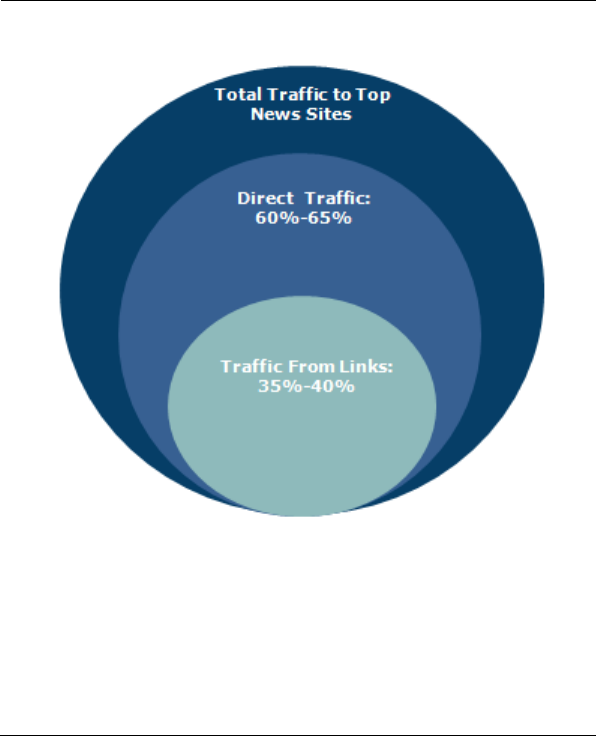
7
How People Get to Top News Sites
Source: Nielsen Company and PEJ Research
Note: In the concentric circles, “Traffic From Links” is the percent of visits to
news sites that come from users clicking a link from another site (for example: if
a user clicks on news story on CNN from a Google Search, then it is counted as
being “referred” from Google to CNN.com). In order for a click to be counted,
five members of Nielsen’s panels must display the behavior. “Direct Traffic” is
either referrals that don’t meet the threshold or that do not come from a referral
at all. Two sites do not fit the pattern represented: Yahoo News and Google
News. For those two sites around 60% of the traffic is referred from their
respective search engines (Yahoo search and Google Search).
PEW RESEARCH CENTER’S PROJECT FOR EXCELLENCE IN JOURNALISM
Where does the remaining 60% of traffic to the top news sites come from? While Nielsen does not break
down this specific percentage further, it does confirm that three behaviors make up the mix. First,
people go to a site directly. That a user has that page as his or her home page, or types in the URL
address itself. Second, a user can be referred to one page on a news site from a different page on that
same domain—the sought-after self-referral. For example, a user reading a story on Examiner.com
about local college graduates’ employment rates then clicks on an earlier story elsewhere on the site—
thereby staying longer and diving deeper into the domain. Third, hundreds of sites, according to
Nielsen’s estimates, send between one and four individuals to a site over the course of a month and
thus are not named specifically.
Google Drives Most Users
In the 40% of traffic that comes to top news sites from outside referrals, one player emerges as more
important than all others. Together, Google Search and, to a lesser extent, Google News remain the
biggest single driver of traffic to top news sites. On average the search engine was responsible for 30%
of the traffic to these top news sites. Indeed, it was the lead referring site for 17 of these major news
sites and the second-ranked referring site for the other four.

8
Most of the referrals stem from topic or news event-related searches like “Japan Tsunami” or “NCAA
champion, men’s, 2011.” Also in the mix, though, are referrals from users who type in the name of a
specific site or information source. According to Matthew Hindman of George Washington University,
this latter behavior generally accounts for “a large minority of search behavior.”
6
Google’s influence varies by the type of site. The two most popular aggregators of local news in the
United States (as well as Google’s news aggregation site, Google News) depend on Google’s search
engine for the majority of their traffic.
7
To legacy news sites with established prominent brands in their own right, Google was a less significant
but still important source of audience. At these sites (which make up 15 of the top 21 sites for which
there is referring data) Google represented an average of 28.4% of the traffic per site.
Topix.com, the top aggregator of purely local news (and the No.
20 news site overall), acquired almost two-thirds of its traffic from Google. Examiner.com, another local
aggregator that also produces some of its own content (and the No. 17 news site overall), relied on
Google for 52% of its traffic.
And that percentage was fairly consistent. ChicagoTribune.com came in at the low end (with 21.2%), and
NYdailynews.com was at the high end (37%).
6
Email exchange between PEJ and Matthew Hindman, April 9, 2011.
7
“Google” as a referring site includes three Google products that send traffic to a site: Google Search, Google
News and Google Maps.
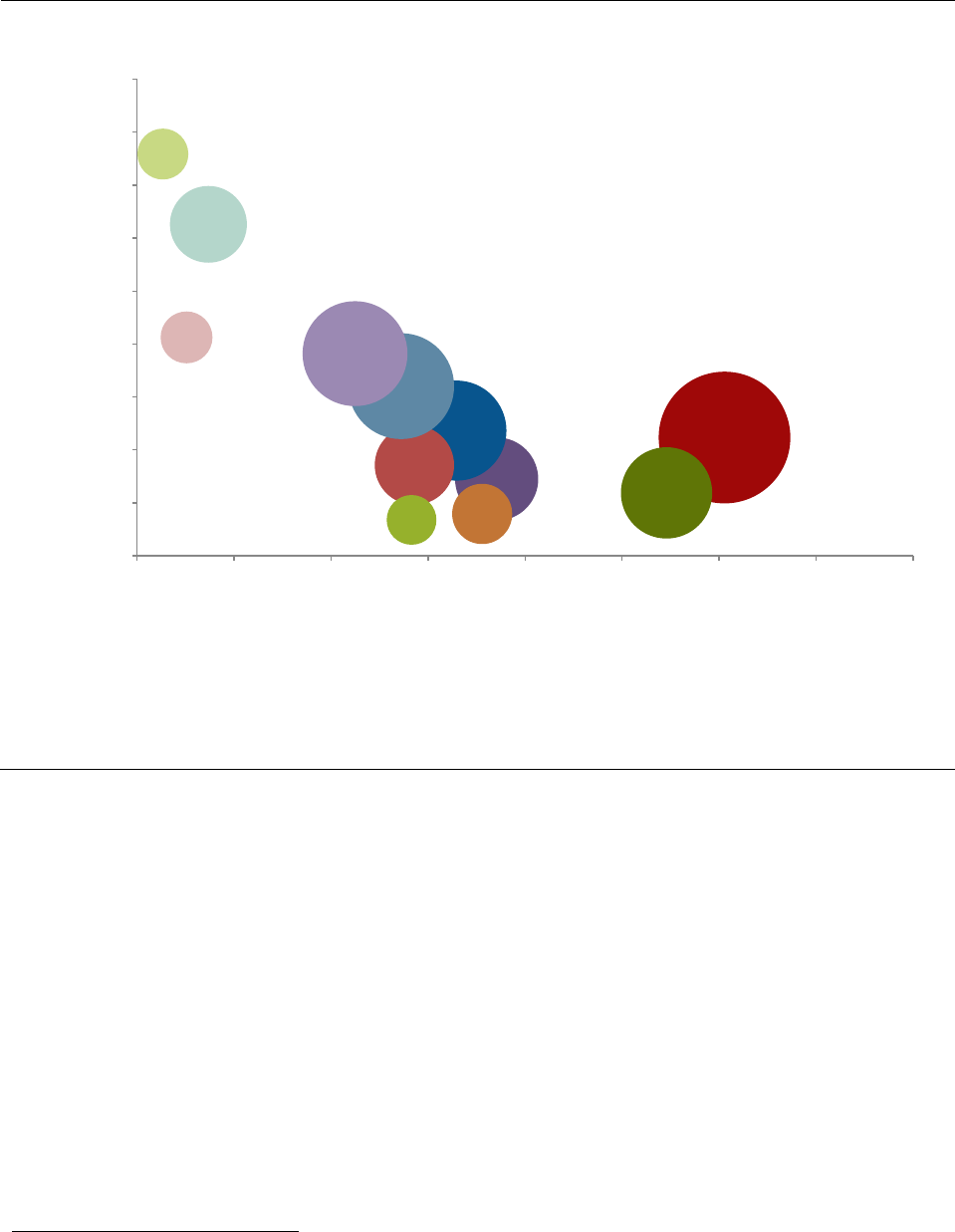
9
The Influence of Google on Top News Sites
Source: Nielsen Company and PEJ Research
Note: In this graph the size of the bubble represents the site’s total unique visitors from any Google domain. The three that send
traffic to news sites most often are Google Search, Google News, and Google Maps. The vertical axis is the sites total unique
visitors. The horizontal axis represents the percentage of traffic coming to each site from Google. The rest of the top 21 sites are
available in the spreadsheet; click on the link below for the full data set.
PEW RESEARCH CENTER’S PROJECT FOR EXCELLENCE IN JOURNALISM
Google’s influence was smallest on those sites that are themselves aggregators or something close to it.
Yahoo (search and news combined), competes most directly with Google through its own search engine;
it draws just 2.7% of its traffic from its rival Google. AOL and MSNBC do not have search engines but do
offer email, news and a number of other online services; their news sites AOLnews.com and
MSNBC.com drew 3.9% and 10% of their traffic, respectively, from Google.
8
But Google is not the only way in which news content is discovered.
This would suggest that if a
company can become the provider of one service for consumers, say email or search, it tends to be the
provider of choice for all the services it offers. AOL email users also use AOL for news. And it works the
same way for Google which got less than 1% of its traffic from Yahoo’s search engine.
8
MSNBC.com, partially owned by Microsoft and partially by NBC Universal (recently acquired by Comcast),
associates itself with Microsoft’s search engine, Bing. Bing is the default search engine on MSNBC.com
Google News
Examiner
CBS News
Boston.com
Huffington post
ABC News
SF Gate
NY Times
CNN
MSNBC
AOL News
Yahoo News
0
5,000
10,000
15,000
20,000
25,000
30,000
35,000
40,000
45,000
0 10 20 30 40 50 60 70 80
Total Unique Audience (000)
Percent of Audience from Google
Bubble Size = the total number of unique
visitors from Google to each site.

10
Facebook Is Becoming Increasingly Important
Facebook, the massive social networking site, has become a critical player in news. In 2010, all but one
of the top sites for which there was referral data derived at least some of their audience through
Facebook. The one exception was Google News, whose content links to other sites.
With roughly 500 million users worldwide, Facebook’s audience is vastly larger than any single news
organization. Its role has evolved from a network for friends to share personal information to a way for
people to share, recommend and link together all kinds of information, including news. If searching for
news was the most important development of the last decade, sharing news may be among the most
important of the next.
9
For five of the news Websites studied here, Facebook ranked as the second or third most popular driver
to their content. At the top was Huffingtonpost.com, which derived 8% of its traffic from links to
Huffingtonpost.com content posted on Facebook. At the low end were AOLNews.com, MSNBC.com and
the local aggregator Topix, which each derived 1% from Facebook. The New York Times was near the
higher part of the spectrum; 6% of its traffic came from Facebook.
These percentages represent only a fraction of the traffic coming from Google. But they make Facebook
an influential and probably growing force. As Nielsen’s numbers show, few domains affect audiences
this much. Now, the study suggests, Facebook is beginning to join Google as one of the most influential
players in driving news audiences.
9
For more on the social aspects of news, see “Understanding the Participatory News Consumer,” a study
conducted by the Project for Excellence in Journalism and the Pew Internet & American Life Project.
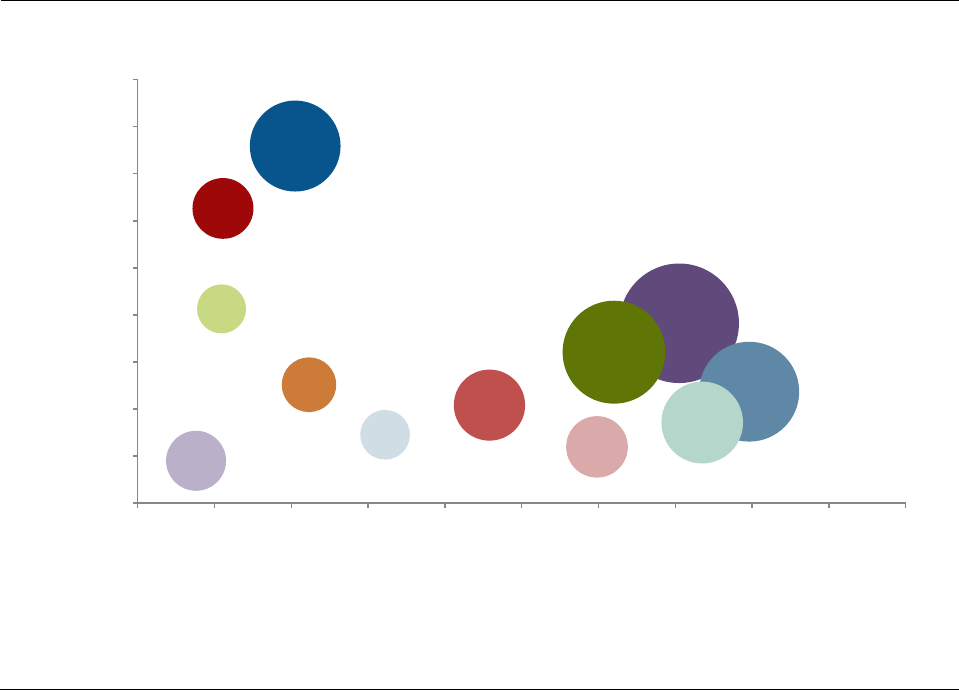
11
The Influence of Facebook on Top News Sites
Source: Nielsen Company and PEJ Research
Note: In this graph the size of the bubble represents the site’s total unique visitors from Facebook. The vertical orientation is the
sites total unique visitors. The horizontal axis represents the percentage of traffic coming to each site from Facebook.
The rest of the
top 21 news sites are available as well, click on the link below for the full data set.
PEW RESEARCH CENTER’S PROJECT FOR EXCELLENCE IN JOURNALISM
Drudge Report: Small Operation, Large Influence
Before Google or Facebook, an early major driver of Internet traffic was the Drudge Report. The site,
founded by Matt Drudge, first gained national recognition during the Clinton presidency for posting
insider information about the Monica Lewinsky scandal. Two decades later, while Drudge is still a small
scale operation, it remains, according to the data, an influential driver of traffic to top news sites. The
Drudge Report ranked as a driver of traffic to all but six of the top sites studied. And, more striking, it
ranked second or third in more than half (12), outpacing Facebook.
In some cases, Drudgereport.com is an extremely important traffic driver. While Facebook never drove
more than 8% of traffic to any one site, for instance, Drudgereport.com provided more than 30% of
traffic to mailonline.co.uk (the British newspaper site the Daily Mail), 19% of the traffic to the
NYPost.com, 15% to Washingtonpost.com and 11% to Boston.com and FoxNews.com.
In other words, the Drudge Report’s influence cuts across both traditional organizations such as ABC
News to more tabloid style outlets such as the New York Post. What’s more, Drudge Report drove more
links than Facebook or Twitter on all the sites to which it drove traffic.
Yahoo News
MSNBC
AOL News
CNN
NY Times
Fox News
Huffington post
Washington Post
ABC News
CBS News
Examiner
Topix
0
5,000
10,000
15,000
20,000
25,000
30,000
35,000
40,000
45,000
0.00 1.00 2.00 3.00 4.00 5.00 6.00 7.00 8.00 9.00 10.00
Unique Audience (000)
Percentage of Audience from Facebook

12
The Influence of the Drudge Report on Top News Sites
Source: Nielsen Company and PEJ Research
Note: In this graph the size of the bubble represents the site’s total unique visitors from Drudge Report. The vertical orientation is
the sites total unique visitors. The horizontal axis represents the percentage of traffic coming to each site from Drudge Report. For
the rest of the top 21 news sites click the link below for the full data set.
PEW RESEARCH CENTER’S PROJECT FOR EXCELLENCE IN JOURNALISM
Twitter
Despite its growth and the amount of attention it receives, the micro-blogging service Twitter appears at
this point to play a relatively small role in sharing of links to news sources. Of the top 21 sites for which
there were data, Twitter showed up as referring links to just nine. And for all but one of those nine,
Twitter sent only about 1% of total traffic.
Twitter says it had around 175 million accounts worldwide in 2010, which would make it a major online
institution, but other data suggests its influence in the United States might be more limited.
10
According
to a survey by PEJ and the Pew Internet & American Life Project, only 12% of U.S., adult Internet users
access Twitter.
11
10
Regardless of how the numbers are interpreted, the analysis of the Nielsen data
suggests Twitter’s user base is far smaller than such sources as Google or Facebook.
Claire Cain Miller, “Why Twitter’s C.E.O. Demoted Himself,” October 30, 2010
11
Pew Internet & American Life, “8% of Online Americans Use Twitter,” December 9, 2010
New York Post
Washingtonpost
Boston.com
Fox News
New York Times
USA Today
LA Times
Yahoo News
CNN
MSNBC
0
5,000
10,000
15,000
20,000
25,000
30,000
35,000
40,000
45,000
0 5 10 15 20 25
Total Unique Audience (000)
Percent of Audience from Drudge Report

13
Of the top news sites, one stood out for getting more traffic via Twitter than anyone else. At
LAtimes.com site, 3.53% of its traffic came from Twitter; that is more than it received from Facebook
(2.05%) and more than triple the next site on the list of Twitter beneficiaries.
Other Referring Sites
Only a handful of other sites made the list for referring substantial
amounts of traffic. And these all tended to be aggregators, search
engines or social networks where consumers shared or
recommended content. Yahoo (Yahoo News and Yahoo Search
combined), for instance, appears on 7 o f the top 21 sites. Reddit and
StumbleUpon, two aggregators of news, both show up as a referrer
on 8 of the top 21 sites (ABC News.com, Boston.com, CNN.com,
Examiner.com, HuffingtonPost.com, DailyMail.co.uk, NYTimes.com,
USAToday.com). Finally, Ask.com (formerly askjeeves.com) one of
the Web’s oldest search engines, shows up as a referral page on 4 of
the top sites (Examiner.com, Huffingtonost.com, Topix.com,
ABCNews.com).
How Users Interact With News
Regardless of how they arrive, how often do visitors return to news sites over the course of a month,
and how much time do they tend to spend there?
Online experts note that tracking frequency of visits is a complicated issue. Some analysts, like
researcher Matthew Hindman at George Washington University, argue that unique visitors over count
individuals and under count their repeat visits. The figure, they contend, tracks computer “cookies,” not
people. So people who visit a site from different computers or different user ID’s will be counted as two
different people, and people who set their computers to erase cookies may be counted multiple times
as well. Despite the debate over unique visitors, the comparison among sites is telling, and the numbers
are so lopsided that even if the number of unique visitors is inflated by a factor of two or more, and the
number of repeat visits might be increased by that amount, these figures reveal a challenge for news.
A consistent pattern emerged across the 25 sites.
The majority of visitors are extremely casual users, visiting only once or twice per month.
Percent of Audience
from Twitter to the
Top News Sites
Percent of Total Unique Audience
LA Times
3.53%
New York Times
1.21
New York Post
1.2
Huffington Post
1.16
Examiner
0.97
NY Daily News
0.85
Washington Post
0.82
MSNBC
0.62
Topix
0.2
Source: Nielsen Company and PEJ
Research
PEW RESEARCH CENTER’S PROJECT
FOR EXCELLENCE IN JOURNALISM

14
Sites Users Don’t Visit Often
Source: Nielsen Company and PEJ Research
PEW RESEARCH CENTER’S PROJECT FOR EXCELLENCE IN JOURNALISM
On average, 77% of the traffic to the top 25 news sites came from users who visited just one or two
times. The percentage varied among sites, but for all was more than half of their unique visitors for the
month. Examiner.com, a local news aggregator site with some original content, had the highest
percentage of these casual visitors (93%), followed by CBSNews.com (90%) and ABCnews.com (89%).
Yahoonews.com, had lowest number of people who visited only once or twice, but it was still more than
half (55%).
On the other end of the scale are the most loyal visitors—power users—those who visit 10 times a
month or more. These power users make up only a minority of the users to any site, just 7% on average.
Only six of the top news sites can even boast power users in double
digits (representing 10% or more of their audience). At none of the
top news sites did the number of power users reach 20%.
Indeed, casual users dominated on all sites, often by a margin of
more than five to one.
Who benefits from having the largest percentage of power users?
With a couple of exceptions, it’s the biggest of the big: At the highest
end was CNN.com, where almost one in five is a power user (18%
visit more than 10 times per month), followed by FoxNews.com with
16%. All of the sites with double digit power users rank in the top
eight news sites in popularity, suggesting that having a larger base of
loyal visitors is one key to success. The only two of the top eight sites
that did not reach double digits were NYTimes.com, which ranks fifth
81.8%
76.4
81.7
78.0
4.5
2.2
0.8
3.0
ABC News
CBS News
Examiner
Topix
Percent of Audience that Visits Once Per Month
Percent of Audience that Visits More than 10 Times Per Month
Sites With the Most
Power Users
Percent of Users Who Visit More Than
10 Times per Month
CNN 17.8
Fox News 16.4
Yahoo 14%
AOL News
13.4
Google News
12.6
MSNBC
11.1
Source: Nielsen Company and PEJ
Research
PEW RESEARCH CENTER’S PROJECT
FOR EXCELLENCE IN JOURNALISM

15
in unique visitors and seventh in power users (9% of its audience visit more than ten times per month)
and Huffingtonpost.com, which ranks seventh overall but 17
th
out of 25 in power users. There might be
two other categories—those that visit occasionally–three to six times a month. And then there are those
who visit seven to nine times; call these frequent visitors.
The occasional visitors made up an average of 13% of the visitors to these sites on average; the frequent
visitors just 3%.
How Often Users Visit the Most Popular News Sites Per Month
Averaged Across the Top 25 News Sites
Source: Nielsen Company and PEJ Research
PEW RESEARCH CENTER’S PROJECT FOR EXCELLENCE IN JOURNALISM
One site that stands out from the general pattern is MailOnline (dailymail.co.uk), the Website of the
U.K.-based Daily Mail newspaper. The largest percentage of its audience visits just once a month
(46.5%). But almost a third (31%) visit three to six times; and another 9% visit seven to nine times.
The bottom line is that across the top 25 websites, the majority of users are casual users. Even if the
number of repeat visits is undercounted substantially, perhaps even by half, casual visitors would still
make up a plurality of the traffic. Developing a strategy to appeal to or increase the loyalty of these
visitors—perhaps even to users who would pay for the content—is a challenge. But there also does
seem to a potential audience of core, loyal users who value the brand and come often. For now, the
largest, most nationally known sites have the advantage here.
How Users Spend Their Time with News Online
How much time do people spend with news sites? Overall, the audience pattern forms a spoon-shaped
curve. The plurality, between 30% and 40% of the audience, spends fairly little time on a site—less than
five minutes.
0
10
20
30
40
50
60
70
1 2 3-6 7-9 10+
Percent of Users
Visits Per Month
%
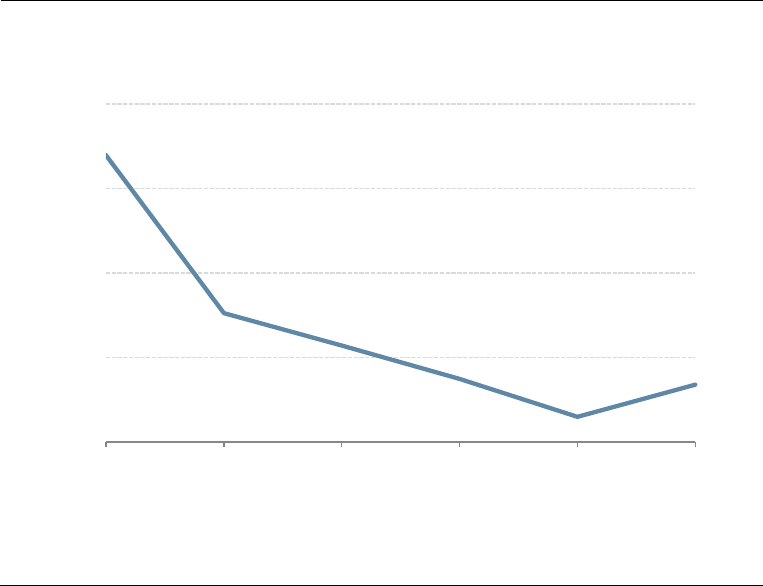
16
The percentage that spends between six and 10 minutes per month then drops to about half that
(between 15% and 20%). And it falls even further to between one and five percent for 41 to 60 minutes.
Average Minutes Spent per Month on the Top 25 News Sites
Averaged Across the Top 25 News Sites
Source: Nielsen Company and PEJ Research
PEW RESEARCH CENTER’S PROJECT FOR EXCELLENCE IN JOURNALISM
But an uptick occurs when you move to those who spend more than one hour per month. Here, the
increase is not as uniform across all 25 sites, but those with the largest unique audience still rank at the
top. CNN.com and FoxNews.com enjoy the greatest percent of these heavy time users, 17% each.
NYTimes.com has the third highest percent of audience using the site more than 60 minutes per month
(12%). And Googlenews.com, in spite of a mission to quickly send users on to the sources that appear in
search results, ranks fourth for this over an hour crowd (11%). Its users may leave to follow a link, but
enough of its audience returns that their total minutes add up to more than an hour a month.
Huffingtonpost.com is at the low end; just 6% of its users devote more than an hour each month to its
content.
0
10
20
30
40
1-5 6-10 11-20 21-40 41-60 61+
Percent of Users
Minutes Per Month
%
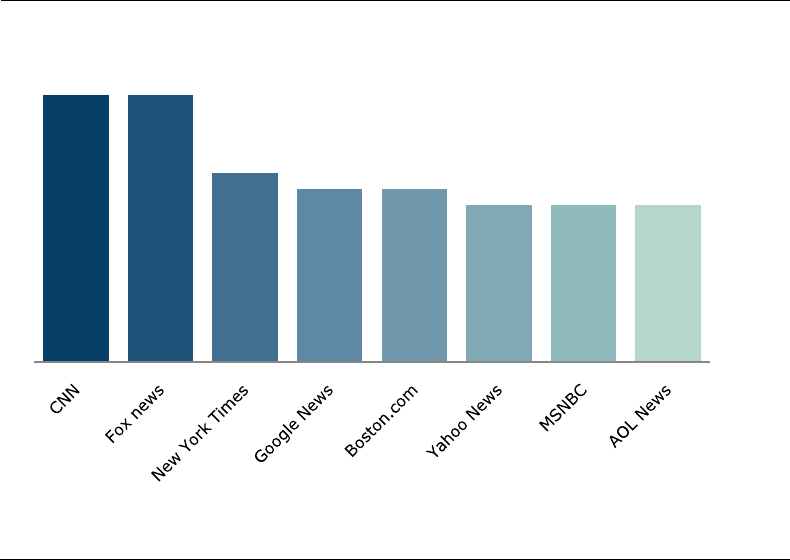
17
Many Top News Sites Attract a Small but Loyal Group of Users
Percent Who Spend More Than an Hour per Month
Source: Nielsen Company and PEJ Research
PEW RESEARCH CENTER’S PROJECT FOR EXCELLENCE IN JOURNALISM
Where Users Go When They Leave
In addition to making it easy to find, consume and interact with news content once someone is on their
site, it is also important for news organizations to understand where users go after they leave. Are they
heading to another company-owned property promoted on that site? Are they sharing content by
heading to a social network that the site pointed them to? Are they clicking on an advertisement and
moving to a retailer promoted on the page? Or have they left for other reasons?
If a large portion of users are going to Facebook after leaving a site, that may indicate the site’s content
is easy to share and viewed as worth distributing to friends. On the other hand, if most users are leaving
for Google or some other search engine, that could indicate that users either did not find what they
were looking for on the site or got what they needed but were not drawn to any other content.
Nielsen collects data about departure sites in a way similar to how it counts sites that direct people to a
news Web page. The data represent the percent of all users to the Website. A “departure” occurs when
someone clicks on a link that takes them away from the main website—a visitor to news.google.com
who follows a link to NYtimes.com, for example, again with a minimum threshold. Clicks within a
website—say from CNN.com to CNN.com/politics, for example—are not considered departures. But if
17% 17
12
11 11
10 10 10

18
the site one moves to has a different Web domain, even if it is related—a move say from CNN.com to
money.cnn.com—Nielsen considers that a departure.
12
What does the data tell us about consumer behavior? Four main findings stand out:
• There are three types actions that tend to pull people away from a main news site. The first is a
subdomain within the family of properties owned by the Website’s parent company. A move
from AOL News for example to Aol.com. The second most prevalent place to go is a sharing site
such as Facebook or Addthis (a tool or “widget” that many sites use through which users can
share content to several different sharing sites). Third, is Google—though not the search engine
or news aggregator that sent people to the site in the first place. The Google component
accessed in these instances is Google the service provider. Users in these cases are accessing
tools powered by Google such as a map attached to a piece of content or screener questions
often attached to email sign-up pages.
13
Still, on 12 of the sites studied here, including the
Nytimes.com and Washingtonpost.com, Google is the first or second departure destination,
accounting for up to 7% of the departure links. This suggests, then that Google’s influence on
digital news goes far beyond search and aggregation.
• The data also offers some suggestions about the impact of advertising. Not a single consumer
product site appears in the mix of destination pages for these news sites. That means that in no
case did five people click on the same ad on a news site in the months studied. This comports
with industry measurements of click-through-rate for ads (CTR) as well as with PEJ survey data
from 2010 that found consumers quite adept at ignoring peripheral ads. In that survey, 79% said
they never clicked on an ad on a news Website.
• The addition of social networking “share” tools to the margins of nearly every news story seems
to have paid off. Facebook shows up among the top destinations for every site studied. So do
sharing tool widgets like Addthis.com, which allow users to share a story across a wide range of
social network pages. And the share tools rank higher among the content producers on the list
than aggregators, suggesting that people share actual news stories more than search results.
While these are technically clicks away from the site, they are positive clicks away, likely
multiplying additional traffic to that story. The extent of their use may even be under counted
here as this figure measures when people click on a link or tool to share the story. It does not
record instances when users copy and paste URL’s onto a share page.
12
These 21 news sites are organized in very different ways. Nielsen reports where users go when they leave at the
subdomain level, like cnn.com/politics rather than the main domain, such as cnn.com. Some sites like AOL have a
wide range of subdomains with all different kinds of sites that are organized differently. The result is that a more
complex site like AOL.com, which actually encompasses dozens of different products from AOL News to AOL
Weather, is slightly different than a site like The New York Times which only includes articles and other content
from the New York Times. And, though a user can link to more than one outside Website over the course of a
month, these percentages are much smaller than those of referring sites.
13
Google provides many different services that news sites could utilize such as powering the search function on
the site itself. For example Google provides the CAPTCHA services for the NYtimes.com email sign up.
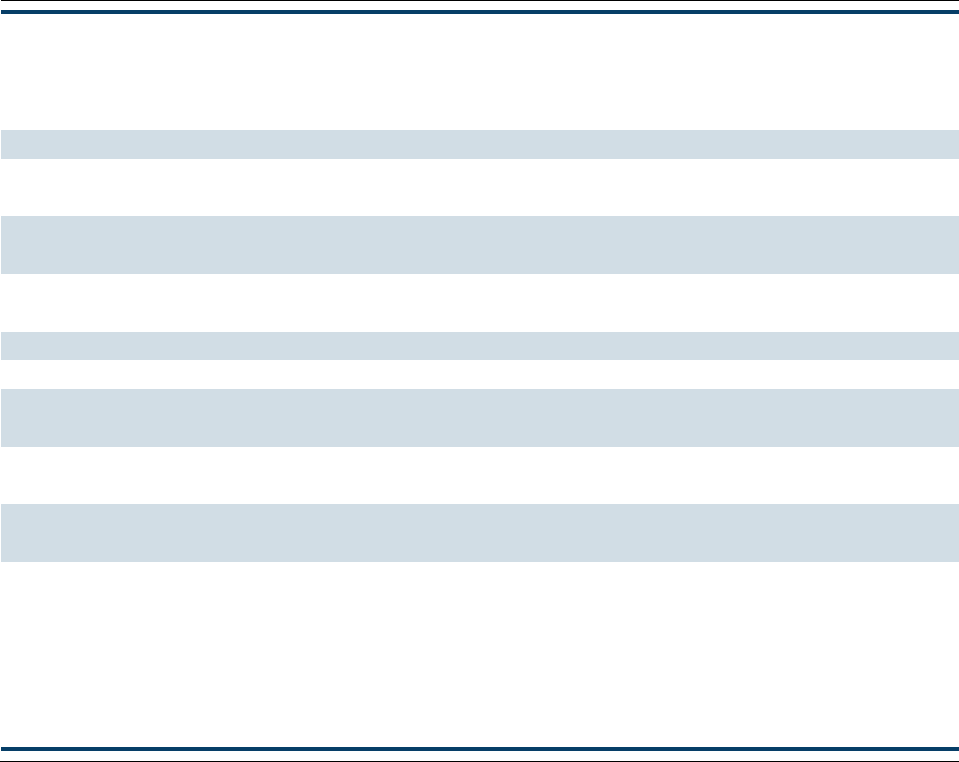
19
How Visitors Share News
Website % of Visitors Clicking on Share
Site
Where Sharing Sites Rank as
Destination Site
MSNBC
2.28% to Facebook
9
th
CNN 5.84% to Facebook 9
th
2.1% to Twitter 20
th
The New York Times
3.31% to Facebook
5
th
1.51% to Twitter 13
th
Fox News
3.81% to Facebook
8
th
2.66% to Gigya (sharing tool) 9
th
Washington Post 3.27% to Facebook 4
th
USA Today
1.21% to Facebook
8
th
LATimes 2.19% to ShareThis (sharing tool) 6
th
1.38% to Facebook
15
th
ABC News 3.91% to Facebook 3
rd
2.26% to Addthis (share tool) 6
th
New York Daily News
1.38% to Facebook
6
th
1.25% to rtgurl (share tool) 8
th
CBS News
2.15% to Facebook
6
th
1.8% to StumbleUpon 8
th
Source: Nielsen Company and PEJ Research
Note: A destination site is counted only when a user clicks on a link to get to the news site. The percentages above are the
percent of visitors who clicked on a link (or tool or “widget) to get to the respective site. For example, 2.28% of users clicked on a
link anywhere on MSNBC.com (or in any story) to share that story on Facebook, this does not count copy and pasted URL’s.
PEW RESEARCH CENTER’S PROJECT FOR EXCELLENCE IN JOURNALISM
• The largest sites that operate many subdomain properties also tend to succeed at keeping much
of the “departing” traffic within the family. On ChicagoTribune.com, for instance, the top seven
destination sites are pages within Chicago Tribune itself, such as the ChicagoTribune.com sports
page or breaking news section. On CNN.com, 13 of top fifteen destination sites are within the
CNN family, including CNN subdomains like news.blogs.cnn.com and money.conn.com as, well
as other Time Warner properties promoted on the site like sportsillustrated.com. Google and
Facebook are the only external sites to make it in that mix.

20
Top Destination Pages for
an Aggregator: Topix
Percent of Visitors Leaving for Each Site
www.google.com
*
6.1%
Maps.google.com 5.71
www.facebook.com
3.15
Ds.addthis.com
2.8
www.youtube.com 2.6
www.bing.com
1.26
Api.seatgeek.com 1.13
www.simplyhired.com
0.95
Topix.cachefly.net
0.86
www.krillion.com 0.64
Source: Nielsen Company and PEJ Research
* As a destination site ww.google.com does
not necessarily denote the main search
engine. Google offers many services such as
Google Maps or custom search that many
websites utilize. When a user uses of these
services it is counted as a departure for
www.google.com because that is the domain
where many of these services are hosted.
PEW RESEARCH CENTER’S PROJECT FOR
EXCELLENCE IN JOURNALISM

21
Top Destination Pages for a Content Producer
With Many Internal Subdomains: NYTimes.com
Percent of Visitors Leaving for Each Site
Timespeople.nytimes.com 7.32%
www.google.com
*
6.15
Movies.nytimes.com 4.39
Query.nytimes.com 3.98
www.facebook.com
3.31
Topics.nytimes.com 3.3
Well.blogs.nytimes.com
2.92
Thecaucus.blogs.nytimes.com 2.5
Video.nytimes.com 1.91
Markets.on.nytimes.com 1.84
Source: Nielsen Company and PEJ Research
*As a destination site ww.google.com does not necessarily denote the main search
engine. Google offers many services such as Google Maps or custom search that
many websites utilize. When a user uses of these services it is counted as a
departure for www.google.com because that is the domain where many of these
services are hosted.
Note: The way Nielsen measures destination traffic is by clicks from one
subdomain to another. Some sites use subdomains more than others to designate
different parts of their site. For example, topics.nytimes.com is a different
subdomain than the main site, which is nytimes.com. Therefore, a user clicking on
topics.nytimes.com from nytimes.com would be counted as ‘leaving’ nytimes.com
for topics.nytimes.com, even though they are both part of the same overall site.
PEW RESEARCH CENTER’S PROJECT FOR EXCELLENCE IN JOURNALISM

22
Top Destination Pages for a Content Producer With
Few Internal Subdomains: NYPost.com
Percent of Visitors Leaving for Each Site
www.google.com*
3.94%
www.facebook.com
2.63
www.drudgereport.com
1.43
Buzzbox.buzzfeed.com 1.01
www.addthis.com
0.86
Cdn.rtgurl.com 0.84
www.nationalreview.com
0.81
Ds.addthis.com
0.79
Cdn.cinesport.com 0.73
Source: Nielsen Company and PEJ Research
* As a destination site ww.google.com does not necessarily denote the main search
engine. Google offers many services such as Google Maps or custom search that many
websites utilize. When a user uses of these services it is counted as a departure for
www.google.com because that is the domain where many of these services are hosted.
Note: The way Nielsen measures destination traffic is by clicks from one subdomain to
another. Some sites use subdomains more than others to designate different parts of
their site. For example topics.nytimes.com is a different subdomain than the main site,
which is nytimes.com. Therefore, a user clicking on topics.nytimes.com from
nytimes.com would be counted as ‘leaving’ nytimes.com for topics.nytimes.com, even
though they are both part of the same overall site.
PEW RESEARCH CENTER’S PROJECT FOR EXCELLENCE IN JOURNALISM
Google: Parasite or Provider?
One of the long-lingering questions in online news is whether Google is more a help or a hindrance to
news producers? Does Google drive more traffic to a news site or pull more potential traffic away by
offering users the headline and first paragraph on their Google News site and selling advertising against
that content? According to the links users follow, Google News sends most users on to a news
destination, but the range of those destinations is rather limited.
Most of visitors to Google News (not the larger search aggregator Google.com) do click to a news story.
According to the data, less than a third of news.google.com visitors headed to Google.com or another
Google service. The remainder followed a link to a news site.
But the benefactors are limited. Fully 69% of visitors to news.google.com ended up 3 places:
nytimes.com (14.6%), cnn.com (14.4%) and abcnews.go.com (14.0%). Six additional sites were each the
destination for 7-10% of visitors during the time period studied.

23
Top Sites Visitors Go To From Google
News
Percent of Visitors Leaving Google News for Each Site
www.google.com*
30.53
www.nytimes.com 14.6
www.cnn.com
14.38
abcnews.go.com
14.03
online.wsj.com
9.39
www.foxnews.com
9.21
www.reuters.com 8.92
www.washingtonpost.com
8.68
www.nydailynews.com
7.93
content.usatoday.com
7.53
Source: Nielsen Company and PEJ Research
* As a destination site ww.google.com does not necessarily denote the
main search engine. Google offers many services such as Google maps or
custom search that many Websites utilize. When a user uses of these
services it is counted as a departure for www.google.com because that is
the domain where many of these services are hosted.
PEW RESEARCH CENTER’S PROJECT FOR EXCELLENCE IN JOURNALISM
One site notably missing from this list is Facebook. Google News does not link people to content on
Facebook. That makes a certain amount sense as Facebook is not a news site and thus would be very
unlikely to a part of the search algorithm for news. But the relationship or lack thereof, works both
ways. Few if any users come to Google News via Facebook. In other words, Facebook users are not
posting Google News search results on their news feeds (Google does host some wire service content
directly on their site so it is conceivable that Facebook users could link to these stories. But, according to
this data, such instances are rare, if they even occur at all.)
14
For many news creators, by contrast, there is a back and forth relationship with the social networking
site. Again, these numbers are much smaller than the back and forth with Google. And users leaving
sites for Facebook does not necessarily indicate that every visitor is leaving to share news. But it is likely
that as least some of their audience is heading to Facebook to share the news content they have just
seen.
This suggests that in the behavior on these
sites, and perhaps the way the sites are built, Google and Facebook are increasingly set up as
competitors sorting through the material on the Web. Google does so through the power of its search
algorithms. Facebook does so through the power of affinity groups and peer sharing. They are two
fundamentally different way to navigate the Web, and they are not, at least as of 2010, comingling with
each other as much as other content sites mingle with both of them.
14
As noted earlier, at least 5 panelists need to exhibit a behavior over the course of a month for that behavior to
register in their dataset.

24
Traffic To and From Facebook Among Top News Sites
Site
Percent of Visitors
Leaving to
Facebook
Percent of Visitors Coming
From Facebook
Yahoo News
6.64% 2.05%
CNN
5.84 7.05
Huffington Post
4.48 7.96
Examiner
4.44 5.98
Chicago Tribune
4.12 2.17
Boston
4.02 3.75
ABC News
3.91 7.35
SFGate.com
3.82 5.74
Fox News
3.81 2.23
The New York Times
3.31 6.2
Washington Post
3.27 4.58
Topix
3.15 0.76
AOL News
2.73 1.09
New York Post
2.63 1.93
MailOnline
2.41 5.56
MSNBC.com
2.28 1.11
CBS News
2.15 3.22
LATimes
1.38 2.05
New York Daily News
1.38 3.61
USA Today
1.21 1.68
Google News
* *
Source: Nielsen Company and PEJ Research
*Not registered in Nielsen’s figures because fewer than 5 individuals came through or
departed to Facebook from Google News.
PEW RESEARCH CENTER’S PROJECT FOR EXCELLENCE IN JOURNALISM
The Importance of the Home Page
One question in the online world is how important a home page is, particularly if so much traffic is
coming from search. The data here suggest the front page of a Website is vital.
For 21 of the 25 sites studied, the home page is the most viewed part of the site. This suggests a couple
of likely behaviors. One is that some of the traffic coming from search is people typing in the name of
the Website, not searching for specific topics. Second, it suggests that, for certain sites especially, going
online to check the latest headlines is still an important dimension of news consumption.
The dominance of the home page, however, can vary sharply even among those sites for which it is the
No. 1 page people visit. At the top of the list is Reuters.com, where the home page commands fully 79%
of the traffic. That is followed by news.google.com at 62% and cnn.com at 60%. At the low end, even

25
though the home page was still the No. 1 page, was Aolnews.com, with just 6% of all traffic going to
there. Topix.com was second to last at 7%.
The four sites where the home page was not No. 1, where presumably traffic relied more heavily on
search, were: NYPost.com, Examiner.com, the DailyMail.co.uk and CBSNews.com. And for all but
CBSNews.com, a specific article contained in the site garnered the most attention during the time
studied. The top page within CBSNews.com is the video site.
Another finding was that the data suggest that news online remains a heavily text-oriented
environment. Online video did not rank high on any of the sites as a place that people clicked to– even
on the sites whose legacy product is affiliated with television, except CBSNews.com
Of the top 25 sites, five come from outlets associated with video (television): FoxNews.com, CNN.com,
MSNBC.com, ABCNews.com, and CBSNews.com. But online video was only one of the top 20 pages
viewed on two of those, CNN.com where it ranked second and CBSNews.com where it ranked first. In
short, despite strong growth in online video, video remains a small, and in comparison with text, a
distant part of the appeal of the Web, even on outlets whose legacy format is visual.
(For more on online
advertising see PEJ’s State of the News Media Report).
Demographics
The NetView data does not breakdown the behavior patterns like time spent or return visits for the
various demographic groups. It would be interesting to know, for example, if women tended to return
more times over the course of a month or if younger cohorts stayed a shorter amount of time than their
older counter-parts. Nevertheless, at the more summary level, some interesting differences emerge
among the top 25 sites when compared with Internet users overall.
15
The most striking differences occur in gender. While usage of the Internet overall is roughly equal
among men and women,
16
One split occurs in the Websites that offer their users a host of services. AOLNews.com,
YahooNews.com and BingNews.com draw a heavier female audience while more men turn more to
Google News. On Google News, men outweigh women by 10 percentage points, 55% to 45%. But at
Aolnews.com the reverse is true, 54% women to 45% men. YahooNews.com, another multi-service
provider, is more evenly split but attracts more women (51%) than men (48%) as does Microsoft’s
search engine BingNews.com.
this is not the case for the top news sites. Some of the top news sites clearly
appeal more to men while others attract more women. On eight of the top 25, sites women outweigh
men by more than five percentage points. On the 17 other sites, the reverse is true.
15
The demographic data analyzed here are from Nielsen’s NetView database from September 2010 and are
derived from the same panels that are used to gather audience data.
16
Pew Internet & American Life Project, “Demographics of Internet users,” May, 2010.
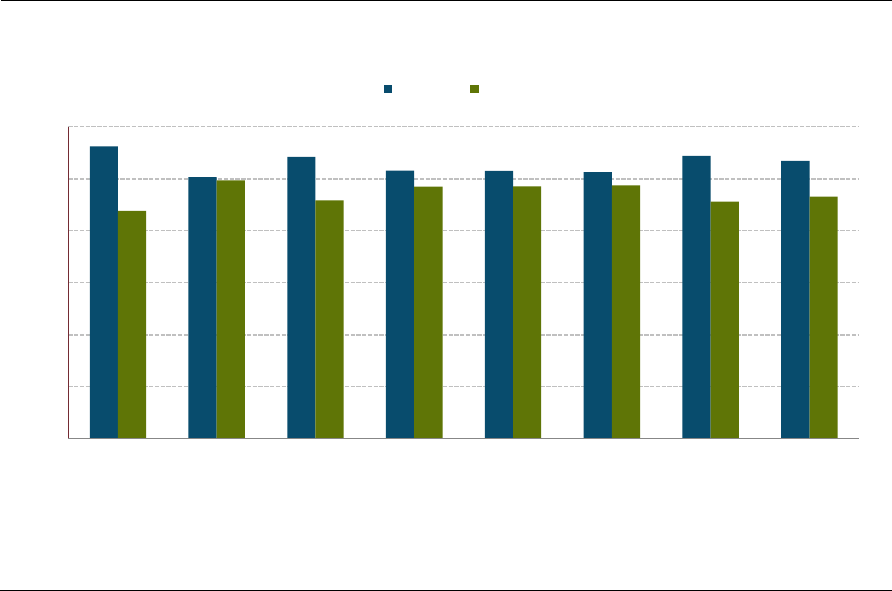
26
Top News Sites That Attract More Women Than Men
September 2010
Source: Nielsen Company and PEJ Research
PEW RESEARCH CENTER’S PROJECT FOR EXCELLENCE IN JOURNALISM
Women also flock in greater percentages to the two largest local news aggregators, the Examiner.com
and Topix.
Men, on the other hand, tend to dominate the business-oriented news sites on the list. The starkest
difference is on Reuters.com, which has nearly twice the percent of men as women, 64% versus just 36%
for women. Similarly, on the Wall Street Journal (WSJ.com) and SFGate.com men outnumber women,
60 to 40%.
0
10
20
30
40
50
60
Topix Huffington
Post
Examiner.
com
Yahoo News MSNBC.com ABC News AOL News Bing News
Women
Men
%
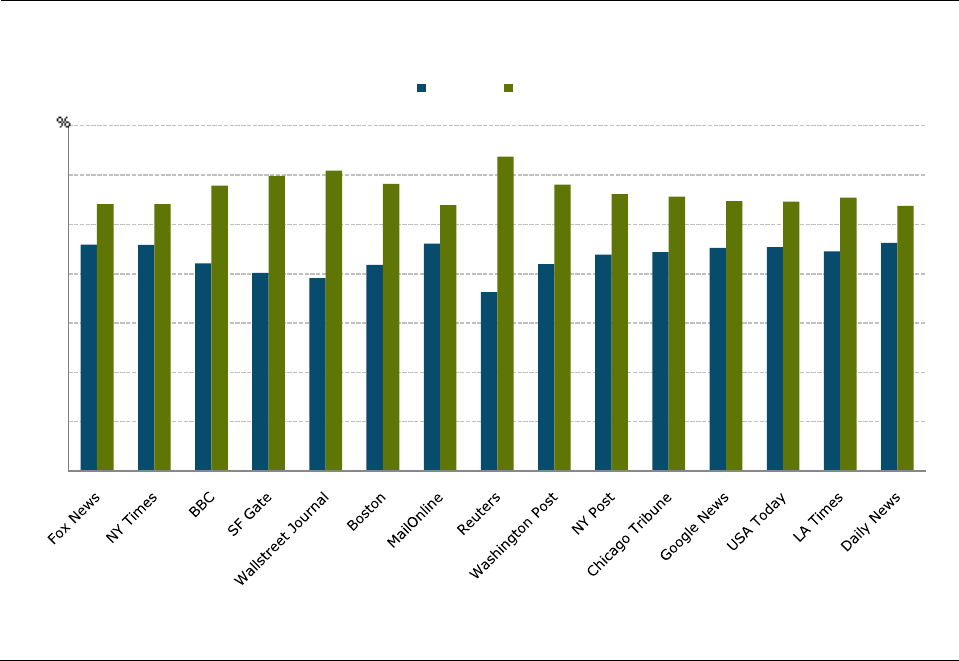
27
Top News Sites That Attract More Men Than Women
September 2010
Source: Nielsen Company and PEJ Research
PEW RESEARCH CENTER’S PROJECT FOR EXCELLENCE IN JOURNALISM
What about age?
Huffingtonpost.com had the greatest proportion of younger adults (18- to 34-year-olds. Fully a third
(32%) of its users fell in that group. Google News brought in the greatest portion of the very young, 2-
to-11 year-olds. The site with the oldest cohort was FoxNews.com, with 15% of its audience over the age
of 65.
Overall, the audiences to these top news sites break down fairly similarly to Internet users overall.
That stands in contrast to news consumption patterns in older legacy media platforms like network tv,
where news consumption tends to skew heavily toward older Americans. This might bode well for the
future of news.
Online news consumers also tend to make a good deal more money and be slightly more educated than
online consumers overall. Roughly 40% of online users in general make more than $50,000 per year. For
news sites, the range is much higher with between 60% and 80% of the audience making more than
$50,000 per year.
0
10
20
30
40
50
60
70
Women Men
28
Education fits a similar pattern with online news users tending to be more educated than Internet users
overall. On the top news sites, those with a bachelor’s degree make up between 25% and 29% of the
audience, compared with roughly 21% of general Internet users.
Income
• The largest percentage of the audience across all the sites makes between $50,000 and $75,000
per year.
• The largest variance occurred in the highest income bracket - those that make more than
$150,000 per year. At the high end was the Wall Street Journal (WSJ.com) (13% in this income
bracket) and at the low end was Topix.com (6%).
• On 21 of the top 25 sites, the lowest income bracket, those who make up to $25,000 per year,
made up between four and eight percent of the audience. The Wall Street Journal and
Reuters.com had the lowest portion of their audience in this income bracket, 4.7% and 5.3%
respectively. Topix.com and YahooNews.com had the highest portion; 11% of Topix audience
was in this bracket and 10% of Yahoo’s.
Education
• The largest portion of visitors to the top 25 sites had bachelor’s degree, ranging between 25%
and 29% of the audience. The next largest portion of audience is those with some college,
ranging between 24% and 27%.
• The largest variance occurs with users that have post-graduate degrees. At the high end was
The Wall Street Journal (WSJ.com) at 27%. NYTimes.com, BBC.co.uk, Boston.com and
SFGate.com were very similar with 26% each. Topix.com had that least amount of users with
post-graduate degrees, 11%.

29
About the Study
A number of members of the PEJ staff assisted in the production of this report, “How People Interact
with News Online.”
The team leaders on the project were research analyst Kenny Olmstead and Deputy Director Amy
Mitchell. Dana Page and Tricia Sartor aided in the visual displays.
How People Interact with News Online is based on an in-depth analysis by PEJ staff of data purchased
from the Nielsen Netview database. We began with Nielsen’s full list of more than 5000 “News and
Information” websites. We culled the list to remove sites that would not be considered news related
such as databases, consulting firms and sources like the National Weather Service. We also drove more
deeply to identify individual news sites rather than families of sites. For instance, when Nielsen
publishes its list of the top news sites, it uses CNN Digital Network, which is actually several different
sites. In our analysis we use CNN.com, its primary news site. Next, we identified the top 25 sites on the
list, according to each site’s unique visitors averaged across 9 months, the first three quarters of 2010.
The main research was then conducted in four parts using data from this list of 25 sites. The first part is
usage data averaged from the first three quarters of 2010. The second is referral site data from
September 2010. The third is destination page data from September 2010. The final data set is
demographic data on the users who go to the top 25 news sites.
Site Usage Data-
This data included all of the top 25 news sites according to Nielsen. PEJ first looked at the list of
Nielsen’s top “News and Information” category for September. Then sites that were not strictly news
were pulled out. For example many of the top sites only provide weather information, for the purposes
of this study PEJ pulled these sites out of the list. The resulting list is a list of the top 25 news properties
in the U.S.
The usage data included 2 main measurements, visits per month and time spent per month. A visit, or
“session”, is defined as “a continuous series of URL requests.” By Nielsen’s definition a session is ended
after 30 minutes of inactivity, and that session is then logged as being however long the average session
is for the site. For example if a user is reading a NYT.com story and leaves the tab open for more than
30 minutes, that session is ended and the time spent for that session is logged as whatever the average
session on NYT.com is. These visits were then broken out by what percentage of the audience visited
once per month, twice, etc. up to 10 or more times per month.
Time spent per month is the total number of minutes spent on a website over a month. Similar to visits
this is broken down into several increments of the percentage of visitors to each site that spent from 1-5
seconds to over an hour.
Referral Sites
This data set included 21 of the top 25 sites. The Wall Street Journal, BBC.com, Bing News, and Reuters
are structured in a way that prevents Nielsen from capturing this data.

30
A “referral” is when a user clicks on a link to get to one of the top 21 sites. For example if a user clicks
on a link to a story on CNN.com that was embedded in a story on the New York Times, then that counts
as one “referral” to CNN.com from NYT.com. The resulting percentage is a percentage of the traffic to
each site that comes from other sites. Because of the way some sites are structured it is possible to be
“referred” from within the same site. For example money.cnn.com and cnn.com are different
subdomains, if a user clicks from money.cnn.com to cnn.com is counted as a referral from
money.cnn.com.
Destination Pages
This list of sites as well is the top 21 of 25 sites, for the same reasons cited under referral sites. A
destination page refers to a where users go when they leave a site. This is measured by users clicking on
links within one site that takes them to another site. Under Nielsen’s panel based system 5 users must
exhibit a specific destination pattern for it to be counted at all. For example if a user clicks on a link to
Facebook from a story in NYT.com it counts Facebook as a “destination” page for NYT.com, but 5 users
on Nielsen’s panel must exhibit this behavior for it to be counted at all.
PEJ grouped destination pages with common purposes into larger categories. The three main categories
are: subdomains within the main site, sharing tools, and search. Subdomains within the same page are
defined at users clicking on a link that takes them to a different place in the same site (the same
situation as a user being “referred” from money.cnn.com to cnn.com a user can leave from cnn.com to
money.cnn.com). The second category is sharing sites or tools. This includes Facebook, but also share
tools or widgets used by many sites that allow users to share the story it many different sharing sites.
The third is search; for the most part this is Google.
Demographics
For the demographics PEJ analyzed Nielsen Netview data from September 2010. The data is broken
down by gender, age, income, education, and geographic region. For this study PEJ only looked at
certain key demographics, but the Nielsen data offers more detailed breakdowns for each site.
Nielsen’s Methodology
Here is a PDF of Nielsen’s “Glossary of Terms” which gives some insight to Nielsen’s various
methodologies.
Here is Nielsen’s publicly available synopsis of its methodology, for a more detailed
version contact the Nielsen Company directly.
